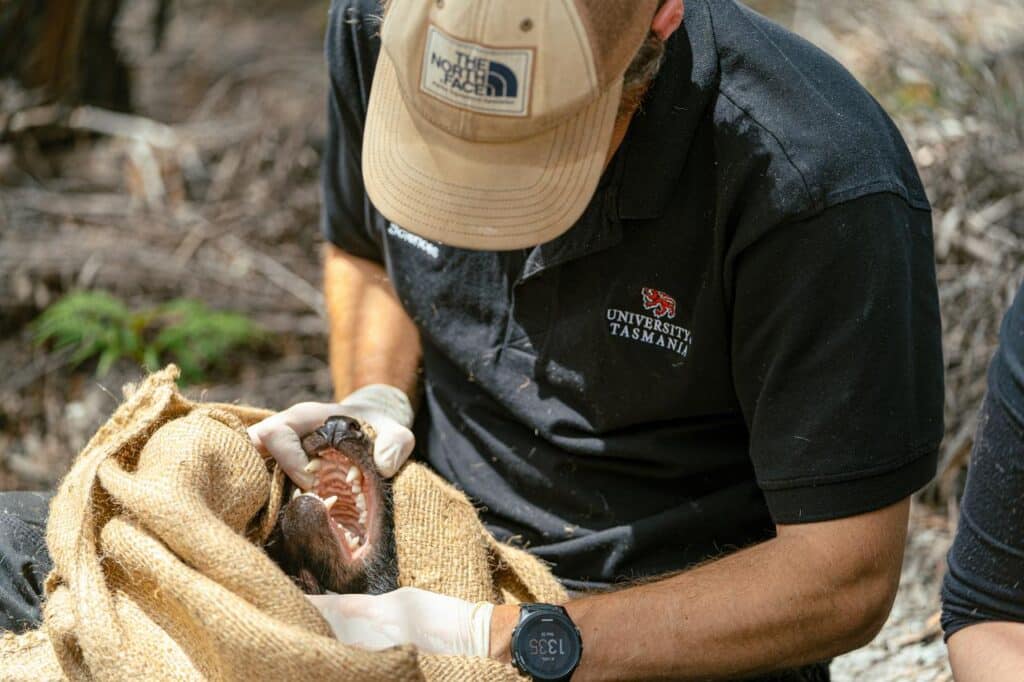The University of Tasmania has found that devastating devil facial tumour disease (DFTD), which has wiped out two-thirds of the species over the past 30 years, is adapting to coexist with devil populations.
The research was published in the journal Evolutionary Applications in June 2023.
Dr Rodrigo Hamede, a disease ecologist at the University of Tasmania, said that changes in tumour genetic diversity in long-affected regions like West Pencil Pine in northwest Tasmania led to lower infection rates and a levelling off of the devil population drop.
“This could be due to differences in how deadly and how transmissible different tumour variants are, or due to devils developing resilience against DFTD, or a combination of both, but we have found that they can now coexist,” Dr Hamede said.
The research team, which included members from France, the United States, and Australia, examined 159 cancer genomes from the West Pencil Pine devil population to evaluate the dynamics of tumour variations across the decade-long outbreak.
“We know that shortly after DFTD arrived in West Pencil Pine in 2006, it reached its peak of genetic diversity,” Dr Hamede said.
“Over time, some DFTD variants were weeded out, while a few became better adapted and fixed in the population”.
“This suggests that, through selective processes, the tumour is fine-tuning its optimal virulence (how deadly it is), a trade-off between transmission rate and disease-induced mortality in the animals”.
“This means that DFTD is very unlikely to drive the devil to extinction, but it also means the disease will not disappear; it’s an evolutionary deal to coexist with each other.”

Collaboration with forest landowners was crucial for field research.
Tasmanian forestry company and landowner, Forico has supported the research with long-term field sites established on it’s plantations.
The sites include a population of Tasmanian devils where DFTD has been monitored at three-month intervals since the beginning of the epidemic outbreak in 2006.
In 2020, Dr Hamede spoke to Forico about the study and the importance of plantation access to establish long-term field sites.
“Following the epidemic and response to cancer at individual and population levels for 13 years has allowed us to understand how devils are evolving resistance to cancer across generations,” Dr Hamede said.
“This has been vital for finding new research priorities and developing conservation strategies to protect the species from the devasting effects of DFTD.”
According to Dr Hamede, the relationship with Forico demonstrates that forestry can work “side-by-side with research and conservation projects, with suitable forest management strategies implemented according to specific circumstances.”
More monitoring for affected devil populations.
Dr Hamede said that the research proves that evolutionary processes can lead to the coexistence of host populations and diseases, even when disease-induced mortality is high, such as in DFTD.
He argues that while reducing infection rates and population decline is good news, monitoring and protecting long-term affected devil populations is still critical.
“These adapted populations are vulnerable when planning conservation efforts, as they possess key adaptive traits for future generations of devils”.
“We also need to reduce all other threatening processes, such as habitat loss and fragmentation, genetic deterioration in local populations and roadkill.
“Extinctions are rarely driven by one factor, but act in synergy with other threatening processes.”






